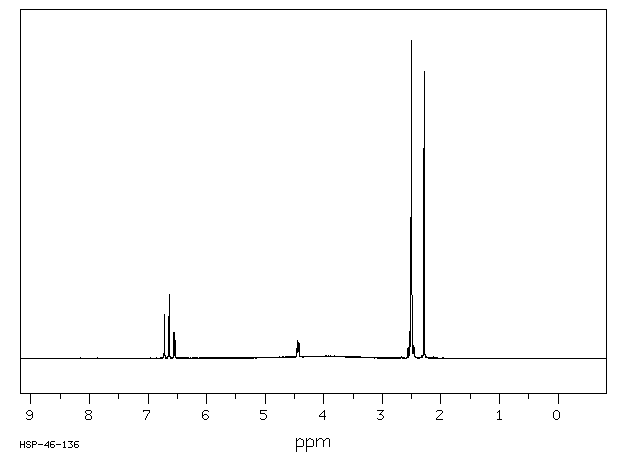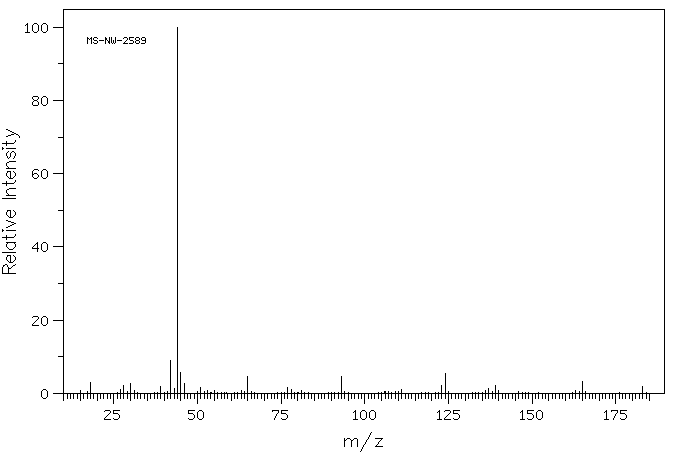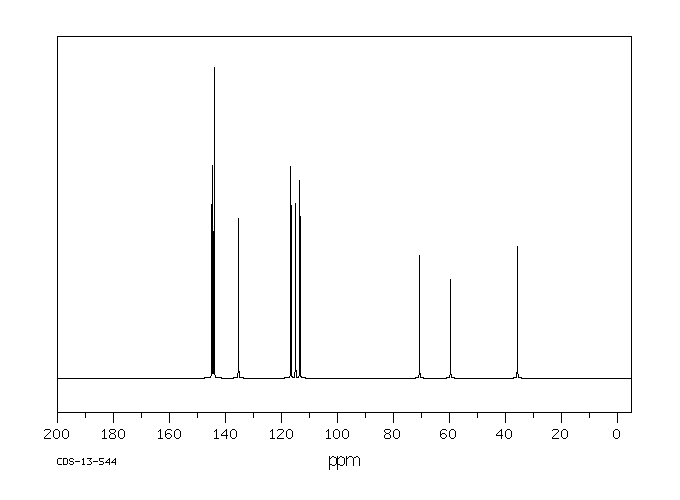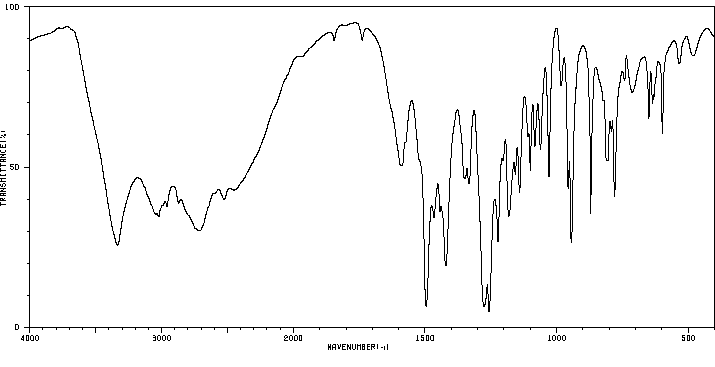Section I.Chemical Product and Company Identification
Chemical Name DL-Adrenaline
Portland OR
Synonym DL-Epinephrine
Chemical Formula C9H13NO3
CAS Number 329-65-7
Section II. Composition and Information on Ingredients
Toxicology Data
Chemical Name CAS Number Percent (%) TLV/PEL
DL-Adrenaline 329-65-7 Min. 98.0 (T) Not available. Rat LD50 (intravenous) 0.07 mg/kg
Mouse LD50 (intraperitoneal) 7.8
mg/kg
Mouse LD50 (intravenous) 3.4
mg/kg
Section III. Hazards Identification
Acute Health Effects Toxic if ingested or inhaled. Avoid prolonged contact with this material. Overexposure may result in serious illness or death.
Irritating to eyes and skin on contact. Inhalation causes irritation of the lungs and respiratory system. Inflammation of the
eye is characterized by redness, watering, and itching. Skin inflammation is characterized by itching, scaling, reddening, or,
occasionally, blistering.
Follow safe industrial hygiene practices and always wear proper protective equipment when handling this compound.
Chronic Health Effects CARCINOGENIC EFFECTS : Not available.
MUTAGENIC EFFECTS : Not available.
TERATOGENIC EFFECTS : Not available.
DEVELOPMENTAL TOXICITY: Not available.
Repeated exposure to an highly toxic material may produce general deterioration of health by an accumulation in one or
many human organs.
Section IV. First Aid Measures
Check for and remove any contact lenses. In case of contact, immediately flush eyes with plenty of water for at least 15
Eye Contact
minutes. Get medical attention.
In case of contact, immediately flush skin with plenty of water for at least 15 minutes while removing contaminated clothing
Skin Contact
and shoes. Wash clothing before reuse. Thoroughly clean shoes before reuse. Get medical attention immediately.
If the victim is not breathing, perform mouth-to-mouth resuscitation. Loosen tight clothing such as a collar, tie, belt or
Inhalation
waistband. If breathing is difficult, oxygen can be administered. Seek medical attention if respiration problems do not
improve.
Ingestion INDUCE VOMITING by sticking finger in throat. Lower the head so that the vomit will not reenter the mouth and throat.
Loosen tight clothing such as a collar, tie, belt or waistband. If the victim is not breathing, perform mouth-to-mouth
resuscitation. Examine the lips and mouth to ascertain whether the tissues are damaged, a possible indication that the toxic
material was ingested; the absence of such signs, however, is not conclusive.
Section V. Fire and Explosion Data
Not available.
May be combustible at high temperature. Auto-Ignition
Flammability
Flash Points Flammable Limits Not available.
Not available.
Combustion Products These products are toxic carbon oxides (CO, CO2), nitrogen oxides (NO, NO2).
Fire Hazards
Not available.
Risks of explosion of the product in presence of mechanical impact: Not available.
Explosion Hazards
Risks of explosion of the product in presence of static discharge: Not available.
Fire Fighting Media
and Instructions
Continued on Next Page
DL-Adrenaline
SMALL FIRE: Use DRY chemical powder.
LARGE FIRE: Use water spray, fog or foam. DO NOT use water jet.
Consult with local fire authorities before attempting large scale fire-fighting operations.
Section VI. Accidental Release Measures
Spill Cleanup Toxic material. Teratogenic material. Irritating material. Light sensitive material. Heat sensitive material.
Stop leak if without risk. DO NOT get water inside container. DO NOT touch spilled material. Use water spray to reduce
Instructions
vapors. Prevent entry into sewers, basements or confined areas; dike if needed. Eliminate all sources of ignition. Consult
federal, state, and/or local authorities for assistance on disposal.
Section VII. Handling and Storage
TOXIC. TERATOGEN. IRRITANT. LIGHT SENSITIVE. HEAT SENSITIVE. REFRIGERATE. Keep locked up. Keep away
Handling and Storage
from heat. Mechanical exhaust required. When not in use, tightly seal the container and store in a dry, cool place. Avoid
Information
excessive heat and light. DO NOT ingest. Do not breathe dust. Wear suitable protective clothing. If ingested, seek medical
advice immediately and show the container or the label. Treat symptomatically and supportively.
Always store away from incompatible compounds such as oxidizing agents, acids.
Section VIII. Exposure Controls/Personal Protection
Use process enclosures, local exhaust ventilation, or other engineering controls to keep airborne levels below recommended
Engineering Controls
exposure limits. If user operations generate dust, fume or mist, use ventilation to keep exposure to airborne contaminants
below the exposure limit.
Splash goggles. Lab coat. Dust respirator. Boots. Gloves. A MSHA/NIOSH approved respirator must be used to avoid
Personal Protection
inhalation of the product. Suggested protective clothing might not be sufficient; consult a specialist BEFORE handling this
product.
Exposure Limits Not available.
Section IX. Physical and Chemical Properties
Solid. (Crystal, powder. Pale yellow - Solubility
Physical state @ 20°C Not available.
greyish yellow red.)
Not available.
Specific Gravity
Molecular Weight 183.20 Partition Coefficient Not available.
Boiling Point Not available. Not applicable.
Vapor Pressure
Melting Point 197°C (386.6°F) Vapor Density Not available.
Not available. Not available.
Refractive Index Volatility
Critical Temperature Not available. Odor Not available.
Not available. Not available.
Viscosity Taste
Section X. Stability and Reactivity Data
This material is stable if stored under proper conditions. (See Section VII for instructions)
Stability
Conditions of Instability Avoid excessive heat and light.
Incompatibilities Reactive with oxidizing agents, acids, acid chlorides, acid anhydrides.
Section XI. Toxicological Information
RTECS Number DO2975000
Eye Contact. Ingestion. Inhalation.
Routes of Exposure
Rat LD50 (intravenous) 0.07 mg/kg
Toxicity Data
Mouse LD50 (intraperitoneal) 7.8 mg/kg
Mouse LD50 (intravenous) 3.4 mg/kg
CARCINOGENIC EFFECTS : Not available.
Chronic Toxic Effects
MUTAGENIC EFFECTS : Not available.
TERATOGENIC EFFECTS : Not available.
DEVELOPMENTAL TOXICITY: Not available.
Repeated exposure to an highly toxic material may produce general deterioration of health by an accumulation in one or many
human organs.
Toxic if ingested or inhaled. Avoid prolonged contact with this material. Overexposure may result in serious illness or death.
Acute Toxic Effects
Irritating to eyes and skin on contact. Inhalation causes irritation of the lungs and respiratory system. Inflammation of the eye
is characterized by redness, watering, and itching. Skin inflammation is characterized by itching, scaling, reddening, or,
occasionally, blistering.
Follow safe industrial hygiene practices and always wear proper protective equipment when handling this compound.
Continued on Next Page
DL-Adrenaline
Section XII. Ecological Information
Ecotoxicity Not available.
Not available.
Environmental Fate
Section XIII. Disposal Considerations
Recycle to process, if possible. Consult your local regional authorities. You may be able to dissolve or mix material with a
Waste Disposal
combustible solvent and burn in a chemical incinerator equipped with an afterburner and scrubber system. Observe all
federal, state and local regulations when disposing of the substance.
Section XIV. Transport Information
DOT Classification DOT CLASS 6.1: Toxic material.
PIN Number
Proper Shipping Name Toxic solid, organic, n.o.s.
II
Packing Group (PG)
DOT Pictograms
Section XV. Other Regulatory Information and Pictograms
TSCA Chemical Inventory This product is NOT on the EPA Toxic Substances Control Act (TSCA) inventory. The following notices are required by 40
CFR 720.36 (C) for those products not on the inventory list:
(EPA)
(i) These products are supplied solely for use in research and development by or under the supervision of a technically
qualified individual as defined in 40 CFR 720.0 et sec.
(ii) The health risks of these products have not been fully determined. Any information that is or becomes available will be
supplied on an MSDS sheet.
WHMIS Classification CLASS D-1B: Material causing immediate and serious toxic effects (TOXIC).
On DSL.
(Canada)
EINECS Number (EEC) 206-347-6
EEC Risk Statements R23/24/25- Toxic by inhalation, in contact with skin and if swallowed.
R36/37/38- Irritating to eyes, respiratory system and skin.
SECTION 16 - ADDITIONAL INFORMATION
N/A










